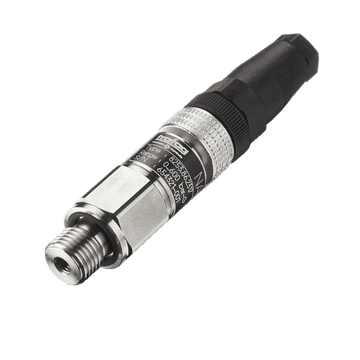Pressure transducers are vital instruments used across industries to convert physical pressure into electrical signals. These devices are key components in process control, automation, safety systems, and equipment monitoring. Whether you’re working in manufacturing, oil & gas, automotive, or HVAC, pressure transducers offer reliable, real-time pressure readings to ensure efficiency and safety.
What Is a Pressure Transducer?
A pressure transducer, also known as a pressure sensor, is a device that measures pressure and converts it into an electrical signal that can be read and interpreted by controllers or monitoring systems. It enables accurate, continuous pressure measurement in a wide range of fluids and gases.
How Do Pressure Transducers Work?
Pressure transducers typically contain a sensing element (such as a strain gauge, piezoelectric sensor, or capacitive element) that responds to applied pressure. This change is then converted into an electrical output—commonly a voltage (0-10V), current (4-20mA), or digital signal (Modbus, HART)—which reflects the measured pressure.
Types of Pressure Transducers
-
Gauge Pressure Transducers
-
Measure pressure relative to atmospheric pressure.
-
Commonly used in HVAC and general industrial systems.
-
-
Absolute Pressure Transducers
-
Measure pressure relative to a perfect vacuum.
-
Ideal for scientific and high-precision applications.
-
-
Differential Pressure Transducers
-
Measure the difference between two pressure points.
-
Used in filtration systems, flow measurement, and level sensing.
-
-
Sealed Pressure Transducers
-
Measure pressure relative to a sealed reference, not the atmosphere.
-
Used where external air pressure variations are not desirable.
-
Key Applications of Pressure Transducers
-
Oil & Gas: Monitor drilling pressures, pipeline flow, and hydraulic systems.
-
Water & Wastewater: Tank level monitoring, pump control, and pressure regulation.
-
Automotive: Engine control systems, brake pressure sensors, and tyre pressure monitoring.
-
HVAC: Ensures correct operation of compressors, fans, and duct systems.
-
Industrial Automation: Pressure control in manufacturing and robotic systems.
-
Medical Equipment: Blood pressure monitors, ventilators, and gas flow systems.
Benefits of Pressure Transducers
-
High Accuracy & Stability: Delivers consistent and reliable data
-
Real-Time Monitoring: Enables immediate response to pressure changes
-
Compact & Durable Design: Suitable for harsh industrial environments
-
Wide Pressure Range Options: From very low to extremely high pressures
-
Low Maintenance: Long operating life with minimal servicing
-
Compliance Ready: Meets global standards (e.g., IECEx, AS/NZS, CE)
How to Choose the Right Pressure Transducer
When selecting a pressure transducer, consider:
-
Type of Pressure: Gauge, absolute, or differential
-
Pressure Range: Ensure it matches your application requirements
-
Output Signal: Voltage, current, or digital communication
-
Media Compatibility: Choose suitable materials for gas, liquid, or corrosive fluids
-
Environmental Conditions: Consider temperature, vibration, and ingress protection (IP ratings)
-
Certification Requirements: Especially important in hazardous areas
Conclusion
Pressure transducers are indispensable tools for safe and efficient pressure measurement across many sectors. Their ability to deliver accurate, real-time data makes them a critical part of industrial monitoring and automation systems.






